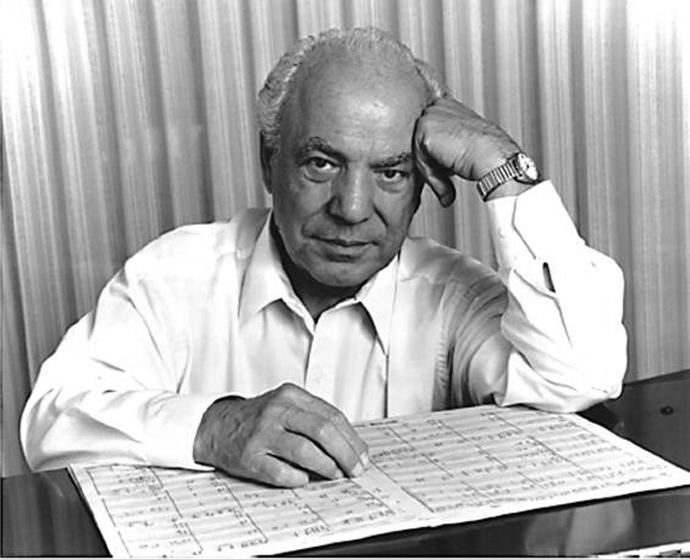
If you went to school during the 1970s you might remember those heavy wooden classroom xylophones, because along with other percussion instruments they were popular in music education at the time. The practical class-music approach using percussion instruments was developed by the German composer Carl Orff who was best known for his 1937 cantata Carmina Burana.
Some of Orff’s educational ideas and concepts faded over the years, though the percussion instruments continued to play a significant role in class music. Many a visitor to a British school in the 1970s or 1980s would have been assailed by the relentless plonking of xylophones and tinkling glockenspiels from the music room.
The xylophone has a long and distinguished history and is thought to have originated in South East Asia in the distant past, before later moving to Africa about 500 AD. The instrument still plays an important role in the classical music of Thailand and Indonesia where some xylophone players have developed remarkable virtuosic skills. The marimba is a kind of xylophone and the name is thought to have African origins.
From a distance, the orchestral marimba and the xylophone look pretty much the same. They both have two rows of wooden tone bars arranged in a similar fashion to a piano keyboard; they both have resonators underneath and they are both played in the same way. But there the similarity ends.
The marimba is usually larger than the xylophone with a range of about five octaves. The resonators of a marimba, suspended underneath the tone bars are larger than those of a xylophone and contribute to its characteristic sonorous quality. In case you are wondering, the resonators are vertical tubes that amplify and enrich the sound.
The length of each one varies according to the pitch of the tone bar, so that lower pitch tone bars have longer resonators. Whereas the xylophone usually sounds bright and piercing, especially when played with hard sticks, the marimba speaks in tones of a darker colour.
The two instruments sound different for other reasons. The underside of the marimba tone bars, especially those of the lower notes are shaped differently to those of the xylophone and contribute to the instrument’s mellow sound. The instruments are also tuned slightly differently but any more detail would take us into the realm of advanced acoustics.
Boris Papandopulo is something of a legend in his native Croatia. Yes, his name sounds Greek because he was the son of the Greek nobleman Konstantin Papandopulo. He’s considered one of the most important Croatian musicians of the 20th century and has also worked as writer, journalist and pianist. He was also a prolific composer and ventured into many musical fields including music for stage and film.
He spent most of his life in Zagreb and his musical style is easily approachable, blending his own musical ideas into earlier styles as well as borrowing ideas from Croatian music. As a result, there’s a touch of neo-classicism to his music which you’ll hear in this delightful four-movement xylophone concerto of 1983.
The scampering first movement has frequent references to music of yesteryear and the gentle slow movement (04:10) evokes the essence of Eastern Europe, though classical motifs often creep into the flow. The brief third movement (09:29) is a curious surreal waltz while the sparkling finale (11:40) ends the work in joyous mood. The concerto is given a thoughtful and beautifully measured performance by the talented young Caleb Posey.
Paul Creston (1906-1985): Concertino for Marimba and Orchestra. Nathan Coffman (marimba), Portland Youth Philharmonic cond. David Hattner (Duration: 20:05; Video: 1080p HD)
Paul Creston (born Giuseppe Guttoveggio) is today considered one of the grand old men of American classical music. He was the son of humble Sicilian immigrants and as a composer he was completely self-taught. He acquired his musical skills and knowledge through many hours of studying the music of the classical masters. To sustain himself during the long nights of self-imposed study, he evidently gave up coffee drinking in favour of smoking ground coffee beans in his pipe.
He rose to fame in the 1930s and while Creston made use of strong rhythmic elements, he was committed to traditional concepts of melody and tonality. Even so, his music (which included six symphonies and several concerti) was championed by a number of important conductors including Toscanini, Ormandy and Stokowski. This three-movement concerto dates from 1940 and is brilliantly played by the gifted young percussionist Nathan Coffman. The chugging first movement contains some lovely lyrical moments while the mysterious slow movement with its gentle string pizzicati (06:23) evokes a mood of sublime stillness. The inventive finale (11:50) is a virtuosic showpiece and brings the work to a satisfying, if rather unexpected conclusion.





